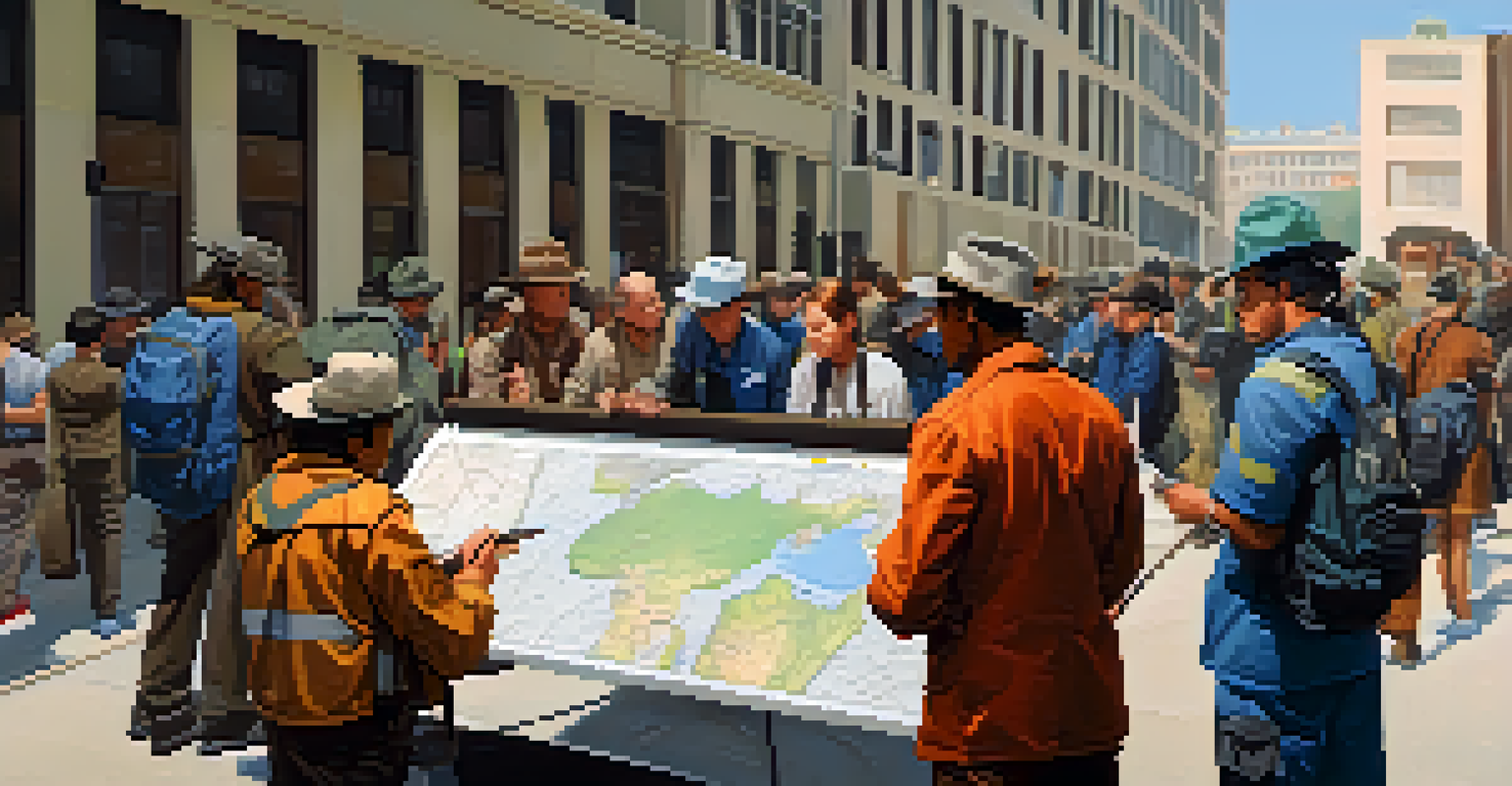Evacuation Procedures: What Travelers Need to Know

Understanding the Importance of Evacuation Procedures
Evacuation procedures are crucial for ensuring safety during emergencies. They provide a clear plan for travelers to follow, reducing panic and confusion in stressful situations. By understanding these procedures, you can protect yourself and others while navigating unexpected events.
By failing to prepare, you are preparing to fail.
Imagine being in a foreign city when an emergency arises. Without a solid understanding of evacuation procedures, you might find yourself feeling lost and overwhelmed. Knowing what to do in advance allows you to respond calmly and effectively, no matter where you are.
Ultimately, having a grasp of evacuation protocols can mean the difference between chaos and order. This knowledge empowers you to act decisively, ensuring not just your own safety but also that of fellow travelers and locals.
Researching Evacuation Plans for Your Destination
Before you travel, it's essential to research the evacuation plans specific to your destination. Each location may have unique risks, such as natural disasters or civil unrest, and understanding these can help you prepare. Check official tourism sites and local government resources for the most accurate information.

For example, if you're visiting a coastal area prone to hurricanes, familiarize yourself with nearby shelters and evacuation routes. Having this information at your fingertips can save precious time in an emergency. Additionally, consider downloading local emergency apps that provide real-time updates.
Know Evacuation Procedures
Understanding evacuation procedures is essential for ensuring safety and minimizing panic during emergencies.
By prioritizing this research, you can travel with confidence, knowing you’re equipped with the knowledge to stay safe. This proactive approach not only prepares you for emergencies but also enhances your overall travel experience.
Identifying Emergency Exits and Safe Zones
Once you arrive at your destination, take a moment to familiarize yourself with emergency exits and safe zones. Whether you're in a hotel, a restaurant, or a tourist attraction, knowing how to exit quickly is vital. Look for exit signs and ask staff about their evacuation procedures.
In times of crisis, the best thing you can do is the right thing.
Think of it like a fire drill in school—knowing where to go can make all the difference. In crowded places, it’s easy to get overwhelmed, so having a mental map of exits can help you stay calm and focused. Don't hesitate to ask questions if you're unsure about the best routes.
By identifying these key locations early on, you create a mental safety net. This simple step can significantly reduce your stress during an emergency, allowing you to respond more effectively.
Packing an Emergency Go-Bag for Travel
An emergency go-bag is a smart investment for any traveler. This bag should contain essential items like water, snacks, a flashlight, first-aid supplies, and important documents. Being prepared with these basics can make a world of difference if you need to evacuate quickly.
Consider adding a portable charger for your phone and a small amount of cash, as ATMs may be inaccessible during emergencies. Personal items like medications and a change of clothes are also wise additions. Tailor your go-bag to suit your personal needs and the length of your trip.
Research Your Destination's Risks
Before traveling, it's important to understand the unique evacuation plans and risks of your destination.
Having this go-bag ready to go can provide peace of mind and ensure you have what you need in a pinch. It’s not just about being prepared; it’s about being empowered to face the unexpected.
Staying Informed: Utilizing Alerts and Notifications
Stay updated with local alerts and notifications while traveling. Many cities have emergency alert systems that send out messages via text or app notifications. Sign up for these services to receive real-time updates about potential threats or evacuations.
For instance, if there’s an approaching storm or a civil disturbance, having timely information can help you make informed decisions. Additionally, follow local news outlets on social media for the latest updates. This way, you’re always in the loop.
By staying informed, you can react quickly and adjust your plans as needed. This proactive approach will not only keep you safe but also allow you to enjoy your travels with less anxiety.
Communicating with Travel Companions and Family
Effective communication is vital during an evacuation. Make sure to discuss your plans with travel companions and establish meeting points in case you get separated. This way, everyone knows what to do and where to go in an emergency.
You might also want to share your travel itinerary with family or friends back home. This can be invaluable for keeping them informed and allowing them to check on you if needed. Consider setting up a group chat for quick updates and coordination.
Communicate and Practice Plans
Establishing communication with travel companions and practicing evacuation procedures can enhance safety and preparedness.
By fostering open lines of communication, you create a support system that enhances everyone's safety. Remember, teamwork is key when facing unexpected situations together.
Practicing Evacuation Procedures in Advance
Practicing evacuation procedures might sound excessive, but it can be incredibly beneficial. Just like fire drills at school, going through the motions can help you feel more prepared. Try to mentally walk through potential scenarios and how you would respond.
You might even do a practice run at your hotel or accommodation. Familiarize yourself with exits and safe areas, and discuss your plan with your travel companions. This way, everyone is on the same page and knows exactly what to do in case of an emergency.

While no one wants to think about emergencies while traveling, being prepared can ease your mind and enhance your overall experience. A little practice goes a long way in ensuring safety.